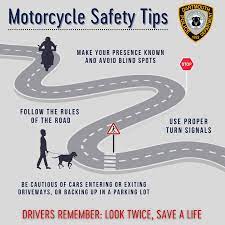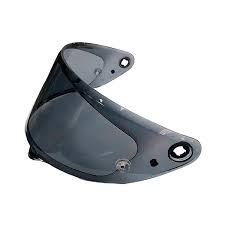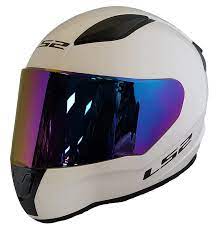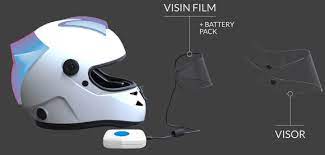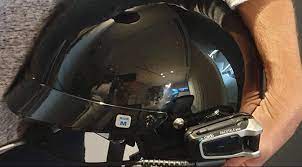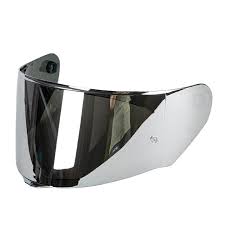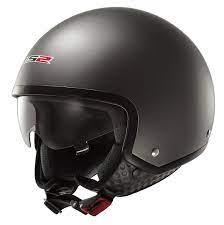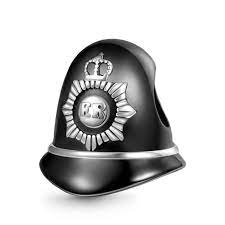Secure Your Ride: The Importance of a Full-Face Helmet for Ultimate Protection
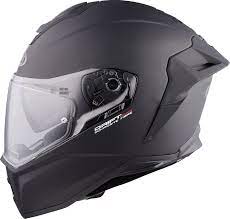
The Importance of Wearing a Full-Face Helmet
When it comes to motorcycle safety gear, one item stands out as an essential piece of equipment – the full-face helmet. A full-face helmet provides riders with unparalleled protection and plays a crucial role in ensuring their safety on the road.
First and foremost, a full-face helmet offers comprehensive head protection. Unlike other types of helmets, such as open-face or half helmets, the full-face design covers the entire head, including the chin and face. This means that in the event of an accident or collision, riders are shielded from potential injuries to these vulnerable areas. The sturdy construction and impact-absorbing materials used in full-face helmets provide an added layer of defense against severe head trauma.
Furthermore, a full-face helmet offers superior protection against external elements. Riding a motorcycle exposes riders to various weather conditions and environmental factors such as rain, wind, dust, and debris. Wearing a full-face helmet ensures that these elements do not hinder your focus or cause discomfort while riding. The visor acts as a barrier against wind gusts, flying insects, and debris that could potentially impair vision or cause distractions.
Another advantage of wearing a full-face helmet is noise reduction. Motorcycles can generate significant levels of noise due to engine vibrations and wind resistance at high speeds. These noises can be damaging to hearing over time and may lead to long-term hearing problems. A well-fitted full-face helmet helps reduce noise exposure by acting as a sound barrier between the rider’s ears and the surrounding environment.
Additionally, modern full-face helmets come equipped with advanced features designed to enhance comfort and convenience for riders. Ventilation systems allow for proper airflow within the helmet, preventing excessive heat buildup and reducing discomfort during long rides. Many models also offer removable liners for easy cleaning and adjustable visors to accommodate varying light conditions.
It is important to note that wearing any type of motorcycle helmet is legally required in many countries, including the UK, for the safety of riders. However, opting for a full-face helmet goes beyond mere compliance with regulations; it demonstrates a commitment to personal safety and responsibility.
In conclusion, wearing a full-face helmet is not only mandatory but also a smart choice for every motorcycle rider. It provides comprehensive head protection, shields against external elements, reduces noise exposure, and offers enhanced comfort. By investing in a high-quality full-face helmet and wearing it every time you ride, you are prioritizing your safety and ensuring that you can enjoy the thrill of motorcycling with peace of mind. Remember, your head deserves the best protection available – choose a full-face helmet.
Essential Tips for Using a Face Helmet: Ensuring Proper Fit, Safety, and Maintenance
- Choose the right size
- Fasten the straps correctly
- Position it correctly
- Check for proper padding
- Regularly inspect for damage
- Replace after an impact
Choose the right size
Choosing the Right Size Full-Face Helmet: A Crucial Safety Tip
When it comes to selecting a full-face helmet, one of the most important factors to consider is finding the right size. Wearing a helmet that fits properly is not just about comfort; it is crucial for your safety on the road.
A helmet that is too loose or too tight can significantly compromise its effectiveness in protecting your head during an accident or collision. Therefore, taking the time to measure and determine the correct size for your head shape is essential.
To find the right size, start by measuring the circumference of your head. Using a flexible measuring tape, wrap it around your forehead, just above your eyebrows and ears. Take note of this measurement and compare it to the sizing chart provided by the helmet manufacturer. Keep in mind that different brands may have slight variations in their sizing, so always refer to their specific guidelines.
When trying on a full-face helmet, ensure that it fits snugly but not uncomfortably tight. It should feel secure on your head without any excessive pressure points. Pay attention to how it sits on your forehead and cheekbones; these areas should be in contact with the padding inside the helmet without feeling overly compressed.
Another important aspect to consider is the position of the chin strap. It should be adjusted so that it comfortably secures under your chin, allowing for easy movement but preventing any slippage or looseness.
Remember that helmets may initially feel slightly tight as they conform to your head shape over time. However, they should never cause pain or restrict blood flow. If you experience discomfort or pressure points after wearing a helmet for a few minutes, it’s a clear sign that you need to try a different size or model.
Choosing the right size full-face helmet ensures optimal protection and functionality while riding. A well-fitted helmet will stay securely in place during sudden movements or impacts, reducing the risk of injury to your head and face.
Always prioritize safety over style when selecting a helmet. While aesthetics are important, they should never compromise the fit or quality of the helmet. Remember that helmets are designed and tested to meet specific safety standards, and choosing the right size is a fundamental part of maximizing their protective capabilities.
In conclusion, when it comes to full-face helmets, choosing the right size is a crucial safety tip that should not be overlooked. Take the time to measure your head circumference accurately, refer to the manufacturer’s sizing chart, and try on different helmets until you find one that fits snugly and comfortably. By prioritizing proper fit, you can ensure that your full-face helmet provides optimal protection every time you hit the road.
Fasten the straps correctly
When it comes to wearing a face helmet, one crucial tip that should never be overlooked is to fasten the straps correctly. Properly securing the helmet straps is essential for ensuring optimal safety and protection while riding.
The straps on a face helmet are designed to keep the helmet securely in place, even during sudden movements or impacts. Failing to fasten them properly can compromise the effectiveness of the helmet and increase the risk of injury in case of an accident.
To fasten the straps correctly, follow these simple steps:
- Place the helmet on your head, making sure it sits snugly and comfortably. Adjust the fit by using any internal padding or adjustment mechanisms provided.
- Locate the chin strap, which is usually a sturdy strap with a buckle under your chin. Insert one end of the strap into the buckle until you hear a click or feel it securely lock.
- Once inserted, pull on both ends of the strap to tighten it around your chin. The strap should be snug but not overly tight, allowing you to breathe comfortably without any excessive pressure.
- Double-check that both ends of the strap are securely fastened by tugging on them gently. They should not come loose or easily slide out of the buckle.
By following these steps and ensuring that your helmet straps are correctly fastened every time you ride, you can significantly enhance your safety on the road.
Remember, wearing a face helmet without properly securing the straps is equivalent to not wearing one at all. No matter how advanced or protective your helmet may be, its effectiveness relies on being worn correctly and securely fastened.
So, take a moment before every ride to check that your face helmet’s straps are properly tightened and secured. It’s a small action that can make a big difference in protecting yourself from potential head injuries and ensuring peace of mind while enjoying your motorcycle adventures.
Position it correctly
Positioning Your Full-Face Helmet Correctly for Maximum Safety
When it comes to wearing a full-face helmet, proper positioning is key to ensuring optimal safety and protection. It’s not just about strapping it on; taking the time to position your helmet correctly can make a significant difference in the event of an accident or collision.
One crucial aspect of positioning your full-face helmet is ensuring a snug and secure fit. The helmet should sit comfortably on your head, with no excessive pressure points or gaps. Start by adjusting the chin strap to ensure a tight but comfortable fit under your chin. This strap plays a vital role in keeping the helmet securely in place during any unexpected impact.
Next, pay attention to the position of the helmet on your head. It should sit level and parallel to the ground, with the front edge sitting just above your eyebrows. Avoid wearing it too far back or tilted forward, as this can compromise both visibility and protection. Adjust the straps and padding inside the helmet to achieve a secure and stable fit.
Properly positioning your full-face helmet also involves adjusting the visor for optimal visibility. Make sure it is clean and free from scratches that could hinder your line of sight. Position it in a way that allows for clear vision without any obstructions or distortions. Some helmets offer adjustable visors, allowing you to adapt them according to different light conditions.
Remember that a well-positioned full-face helmet should not obstruct your peripheral vision either. You should be able to see clearly from side to side without having to turn your head excessively. Take some time before each ride to ensure that everything is adjusted correctly, providing you with maximum visibility and awareness of your surroundings.
Lastly, always follow manufacturer guidelines when it comes to sizing and fitting instructions for your specific model of full-face helmet. Different brands may have slight variations in design or shape, so it’s essential to familiarize yourself with their recommendations for proper positioning.
By taking the time to position your full-face helmet correctly, you are prioritizing your safety on the road. Remember, a well-fitted helmet provides optimal protection against potential head injuries and ensures that you can fully enjoy your motorcycle rides with peace of mind. So, before you hit the road, take a moment to double-check that your helmet is securely positioned for maximum safety and comfort.
Check for proper padding
When it comes to choosing a face helmet for motorcycle riding, one important tip to keep in mind is to check for proper padding. The padding inside the helmet plays a crucial role in providing comfort, fit, and safety.
Proper padding ensures that the helmet fits snugly on your head without causing discomfort or pressure points. It helps distribute the force of impact evenly, reducing the risk of injury in case of an accident. The padding also helps absorb sweat and moisture, keeping your head dry and comfortable during long rides.
To check for proper padding, start by trying on different helmets and paying attention to how they feel on your head. The padding should provide a secure and comfortable fit without being too tight or loose. Make sure there are no gaps between your head and the helmet’s interior as this can compromise its effectiveness in protecting you.
Another aspect to consider is the quality of the padding material. Look for helmets with high-quality foam or cushioning that offers both comfort and impact absorption. The padding should be firm enough to provide adequate protection but not so hard that it causes discomfort or restricts movement.
Remember that over time, the padding may compress or wear out due to regular use. Therefore, it’s essential to periodically inspect your helmet’s padding and replace it if necessary. If you notice any signs of deterioration, such as thinning or flattened areas, it’s time to invest in a new helmet with fresh padding.
In conclusion, checking for proper padding is an important step when selecting a face helmet for motorcycle riding. It ensures a comfortable fit, even weight distribution, and effective impact absorption. By prioritizing proper padding, you can enhance both your safety and enjoyment while out on the road. So remember, always take the time to check for adequate and well-maintained padding when choosing your face helmet!
Regularly inspect for damage
Regularly Inspect Your Full-Face Helmet for Damage
When it comes to ensuring your safety on the road, wearing a full-face helmet is a crucial step. However, it’s not enough to simply wear one; you must also make sure that your helmet is in good condition. Regularly inspecting your helmet for damage is an essential habit that every rider should adopt.
Why is it important to inspect your full-face helmet? Well, over time, helmets can experience wear and tear from regular use, exposure to the elements, or even accidental drops. These factors can compromise the integrity of the helmet and reduce its ability to protect you in case of an accident.
Firstly, check the outer shell of your helmet for any visible cracks or dents. Even minor damage can weaken its structure and compromise its effectiveness during impact. If you notice any signs of damage, it’s essential to replace your helmet immediately.
Next, examine the chin strap and buckle. Ensure that they are in good working condition and securely fasten when properly adjusted. A loose or damaged strap can increase the risk of your helmet coming off during an accident.
Don’t forget to inspect the visor as well. Scratches or cracks on the visor can impair your vision while riding, especially when exposed to bright sunlight or glare. A clear and undamaged visor is crucial for maintaining clear visibility on the road.
Lastly, check the interior padding and foam lining of your helmet. Over time, these components may deteriorate due to sweat absorption or general wear. If you notice any signs of deterioration or foul odors that cannot be eliminated through cleaning, it’s time to replace these parts or consider getting a new helmet altogether.
By regularly inspecting your full-face helmet for damage, you can ensure that it remains in optimal condition and provides maximum protection when you need it most. Remember that helmets have a limited lifespan due to natural degradation over time and exposure to UV rays. It is recommended to replace your helmet every five years or sooner if damage is detected.
Your safety should always be a top priority, and a well-maintained helmet plays a vital role in protecting you on the road. So, take a few minutes every now and then to inspect your full-face helmet for any signs of damage. It’s a small effort that can make a big difference in keeping you safe during your rides.
Replace after an impact
Replace After an Impact: The Lifesaving Tip for Full-Face Helmets
When it comes to motorcycle safety, one crucial tip often overlooked is the importance of replacing your full-face helmet after an impact. Many riders may not realize that even a seemingly minor accident or drop can compromise the integrity of their helmet, making it less effective in protecting their head in future incidents.
The structural integrity of a helmet is designed to absorb and distribute impact forces during a crash, shielding the rider’s head from severe injuries. However, this ability can be compromised after a collision or any significant impact. Even if there are no visible cracks or damage on the outside, the internal structure may have suffered unseen damage that weakens its protective capabilities.
Replacing your full-face helmet after an impact is essential because it ensures that you have reliable protection every time you ride. It’s better to err on the side of caution and invest in a new helmet rather than risking your safety by continuing to use one that may no longer provide adequate protection.
It’s important to note that not all impacts are obvious. Even dropping your helmet from a significant height or accidentally hitting it against a hard surface can cause damage that compromises its effectiveness. Therefore, any time your helmet experiences an impact beyond normal wear and tear, it’s best to replace it.
By following this simple tip of replacing your full-face helmet after an impact, you are prioritizing your safety on the road. Remember, helmets are designed as one-time-use protective gear – they absorb energy during an accident so that your head doesn’t have to. Don’t take chances with your well-being; invest in a new helmet and ride with confidence knowing you have reliable protection every time you hit the road.
In conclusion, replacing your full-face helmet after an impact is a lifesaving tip that should never be ignored. It ensures that you have optimal protection by maintaining the structural integrity of your gear. Don’t compromise on safety – prioritize your well-being and replace your helmet after any significant impact. Your head deserves the best protection available, so ride smart and stay safe on the road.

